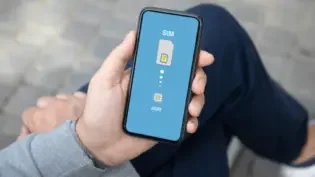
In 1986 I got my first cell phone that wasn’t in a bag. It was a Motorola DynaTAC, and it cost me over $2,000. Since then, cell phones have been adopted ubiquitously by small businesses in the US. Small businesses with less than 5 employees have grown from less than 20 million in the early 90s to almost 50 million today. Most are non-employers or “solopreneurs.” Many who are watching this secular transition in the US workforce are predicting they will number more than 70 million or half the US workforce by 2020.
The top mobile carriers took notice of this, and in the late 90s they concocted a scheme to add 15–20 seconds of INSTRUCTIONS each time a caller is sent to voicemail:
Sprint: “[Phone number] is not available right now. Please leave a detailed message after the tone. When you have finished recording, you may hang up, or press pound for more options.”
Verizon: “At the tone, please record your message. When you have finished recording, you may hang up, or press 1 for more options. To leave a callback number, press 5. (Beep)”
AT&T: “To page this person, press five now. At the tone, please record your message. When you are finished, you may hang up, or press one for more options.”
T-Mobile: “Record your message after the tone. To send a numeric page, press five. When you are finished recording, hang up, or for delivery options, press pound.”
And, you hear a similar message when you call in to hear your own messages.
These extra minutes generate $500 million to $1 billion annually for each carrier. But they have now also created possibly the biggest liability a small business can have: sending new incoming business to voicemail.
Forbes has estimated that 80% of callers that are sent to voicemail hang up. In an environment that is continually increasing in competitiveness, only a small percentage of these small businesses can afford to lose 80% of their new incoming business leads.
While Generation Y’ers (almost 70 million strong) are leading the voicemail exodus on the consumer side, opting instead for text messaging and chat applications, small businesses that seek an alternative to voicemail have only one option: a virtual answering service.
Traditional answering services have a bad reputation, as their systems consist of complex telecommunications hardware connected to the 134-year-old circuit/switch telecommunications network. Fortunately, within the last 3 years, new cloud-based virtual receptionist companies like US Answer and Main Virtual Office have emerged. These companies are leveraging the voice over Internet protocol network that has already replaced a third of the public telephone network. Their systems automate call transferring and message delivery and even offer a mobile app.
Thanks to the cellular carriers blatant money grab scheme we can expect to see voicemail disappear into the sunset by 2020.
Published: November 6, 2013
1823 Views
1823 Views














